Transportation engineering
We undertake a wide range of transport engineering services, including
- Road safety audits (all stages), including Safety Audit & Network Functionality (SANF) reviews
- Scheme investigation studies for corridors, intersections and areas
- Traffic signal designs and reviews
- Speed management reviews/strategies
- Pedestrian and cycle facility designs and reviews
- Car parking and access design/reviews
- Road safety and geometric design reviews
- Level Crossing Safety Impact Assessments (LCSIAs)
- Formal trials of new/innovative traffic control devices and design layouts

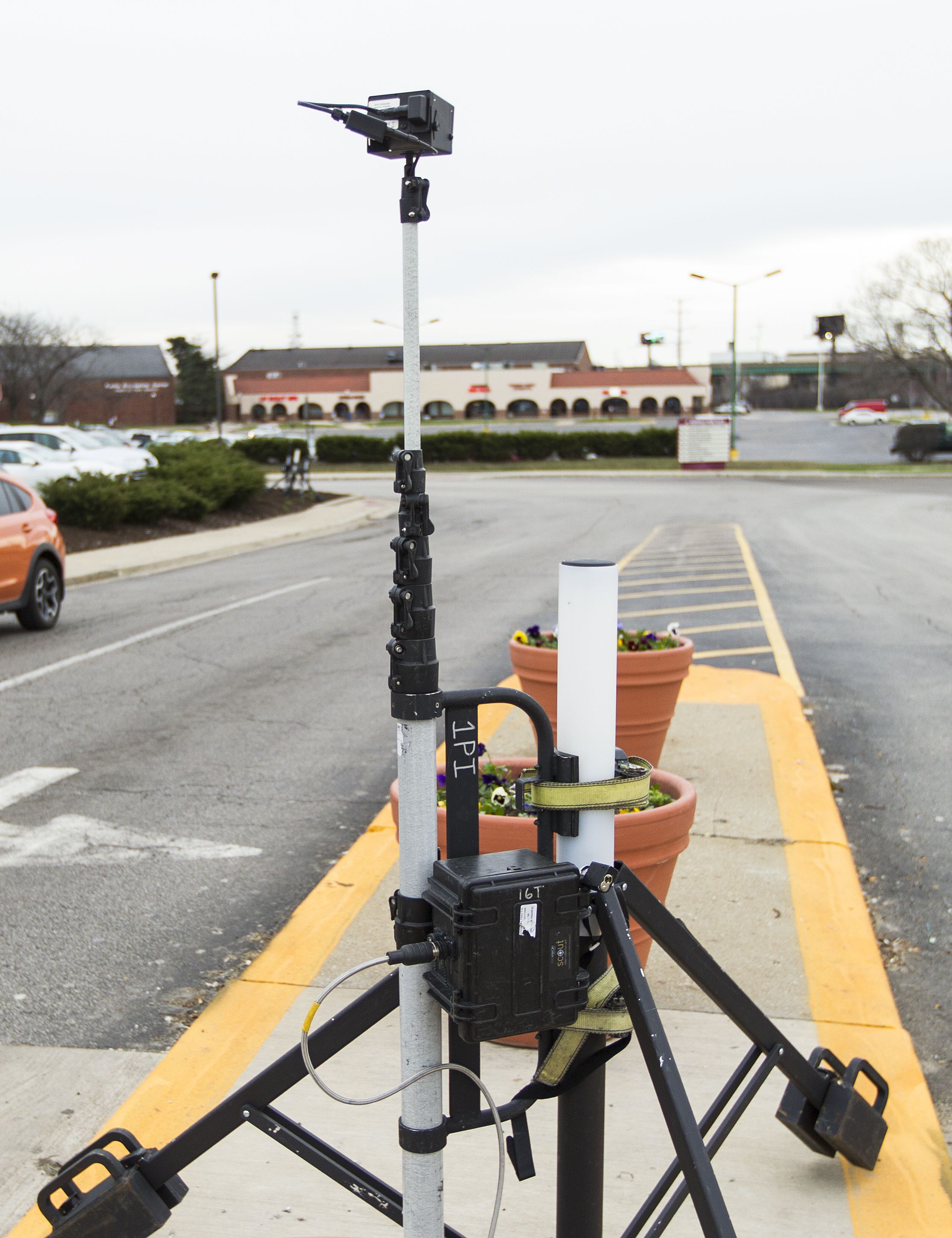 ViaStrada was commissioned by Waimakariri District Council (WDC) to investigate and quantify the pedestrian activity at five locations on Williams Street in the Kaiapoi town centre between Hilton Street and Charles Street. ViaStrada engaged Lowdown Data to undertake pedestrian and motor vehicle turning counts using video collection units. This technology allows the client to gather survey information at low cost. This survey technique also obtained queue lengths at the Hilton Street and Charles Street roundabouts to inform design options.
ViaStrada was commissioned by Waimakariri District Council (WDC) to investigate and quantify the pedestrian activity at five locations on Williams Street in the Kaiapoi town centre between Hilton Street and Charles Street. ViaStrada engaged Lowdown Data to undertake pedestrian and motor vehicle turning counts using video collection units. This technology allows the client to gather survey information at low cost. This survey technique also obtained queue lengths at the Hilton Street and Charles Street roundabouts to inform design options.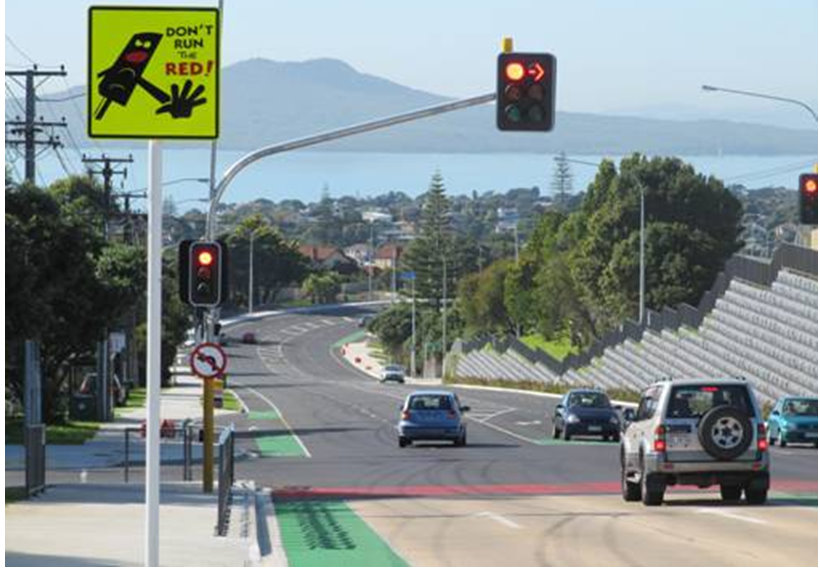 ViaStrada was commissioned by Auckland Transport to edit and review a red light camera pilot evaluation draft report and provide an international literature review. The project was completed in one week.
ViaStrada was commissioned by Auckland Transport to edit and review a red light camera pilot evaluation draft report and provide an international literature review. The project was completed in one week.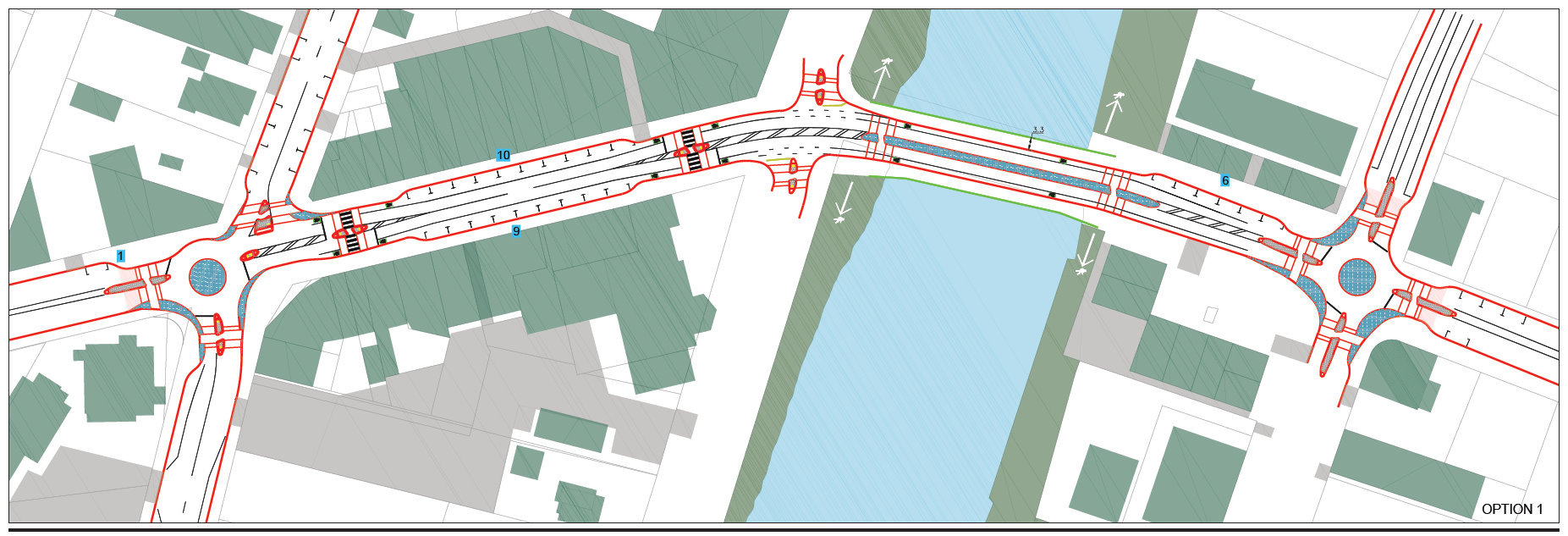 The Kaiapoi Town Centre, Integrated Transport Plan involved site visits, consultation with stakeholders including trucking firms and retailers, working closely with a Community Reference Group, SIDRA intersection modelling, option identification and assessment, and concept designs.
The Kaiapoi Town Centre, Integrated Transport Plan involved site visits, consultation with stakeholders including trucking firms and retailers, working closely with a Community Reference Group, SIDRA intersection modelling, option identification and assessment, and concept designs.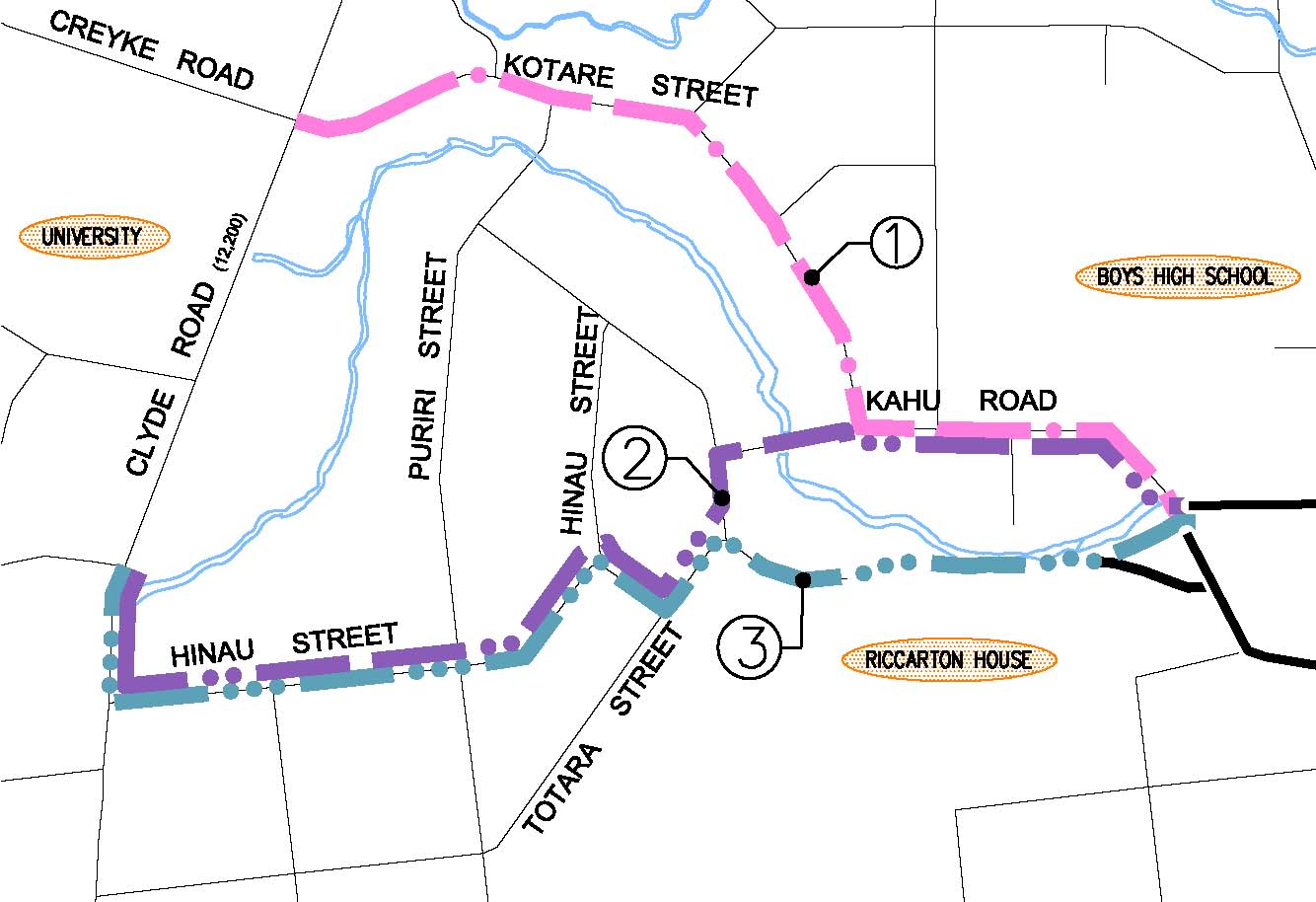 This scoping study for a separated bicycle facility (where cyclists are physically separated from motor vehicles) analysed a variety of routes and design cross-sections between the University of Canterbury and the Christchurch central city. The project, which preceded the Christchurch earthquakes, provides valuable information on the feasibility and costs of separated cycle facilities. There has been considerable public support for cycling through the CCC's public consultation on how to rebuild Christchurch.
This scoping study for a separated bicycle facility (where cyclists are physically separated from motor vehicles) analysed a variety of routes and design cross-sections between the University of Canterbury and the Christchurch central city. The project, which preceded the Christchurch earthquakes, provides valuable information on the feasibility and costs of separated cycle facilities. There has been considerable public support for cycling through the CCC's public consultation on how to rebuild Christchurch.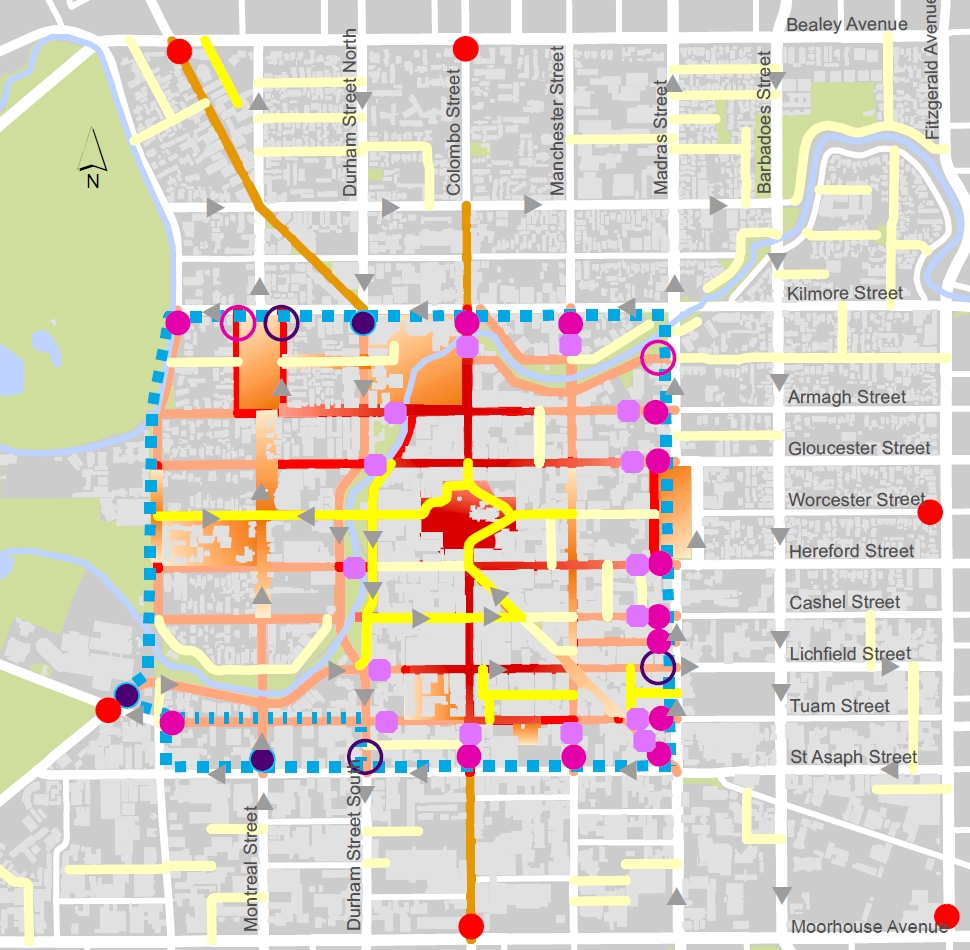 Reduced traffic speeds have been shown to improve central city liveability and street activity levels. This 2011 ViaStrada project suggested the boundaries, specific techniques, design concepts, and implementation steps needed to create a pedestrian-friendly "slow core" for Christchurch. A new 30km/h slow core has now been implemented in 2016, largely mirroring the area suggested by ViaStrada.
Reduced traffic speeds have been shown to improve central city liveability and street activity levels. This 2011 ViaStrada project suggested the boundaries, specific techniques, design concepts, and implementation steps needed to create a pedestrian-friendly "slow core" for Christchurch. A new 30km/h slow core has now been implemented in 2016, largely mirroring the area suggested by ViaStrada.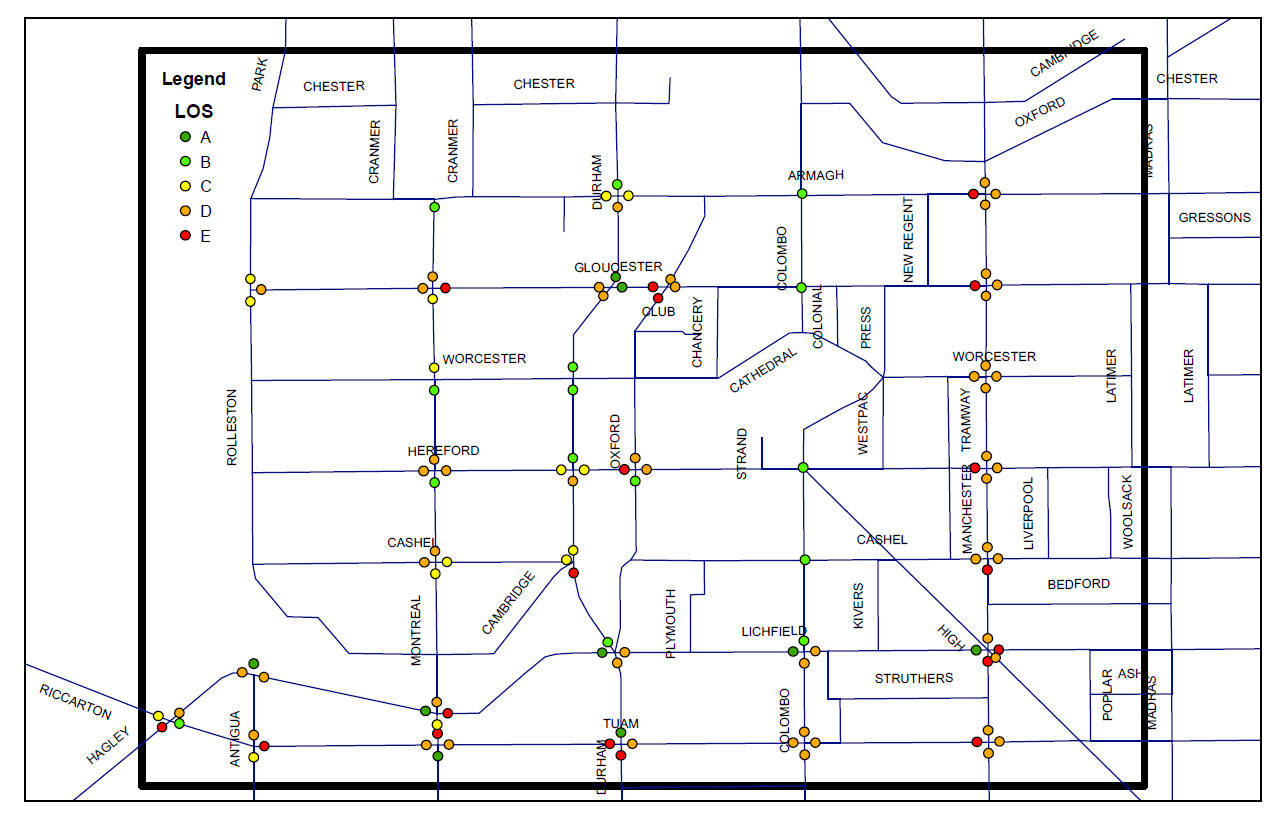 Christchurch City Council commissioned an investigation into ways of improving pedestrian level of service (LOS) at traffic signals in the central city. The underlying hypothesis of this project is that improving the pedestrian level of service of the central city will increase prosperity.
Christchurch City Council commissioned an investigation into ways of improving pedestrian level of service (LOS) at traffic signals in the central city. The underlying hypothesis of this project is that improving the pedestrian level of service of the central city will increase prosperity.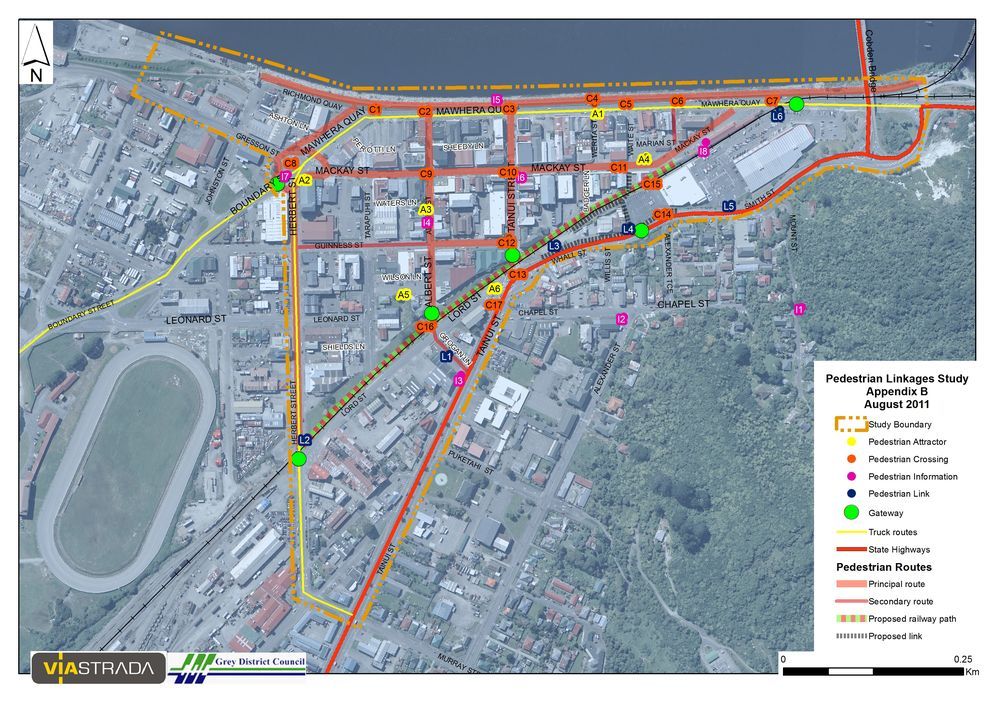 This study focused on enhancing the walkability of the Greymouth Town Centre. The comprehensive final report covered high level strategic planning through to detailed recommendations for site specific design investigations.
This study focused on enhancing the walkability of the Greymouth Town Centre. The comprehensive final report covered high level strategic planning through to detailed recommendations for site specific design investigations.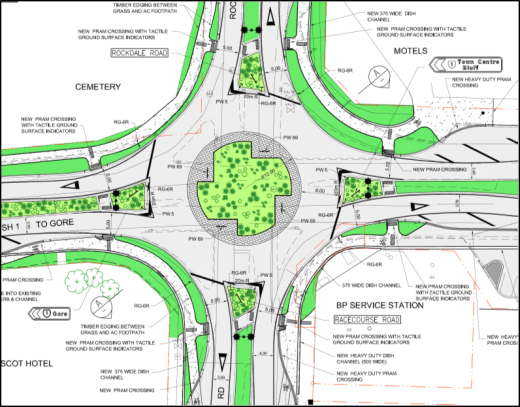 ViaStrada was engaged by the NZTA to carry out a detail design stage safety audit of a proposed roundabout on Tay Street, Invercargill.
ViaStrada was engaged by the NZTA to carry out a detail design stage safety audit of a proposed roundabout on Tay Street, Invercargill.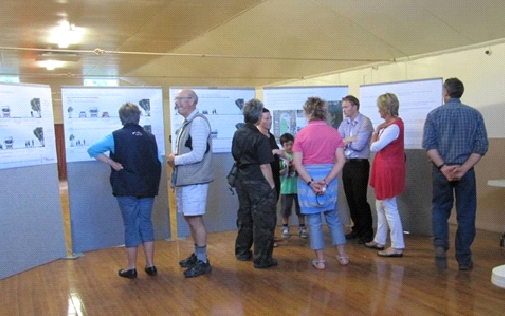 Following the 4 September 2010 earthquake, ViaStrada was engaged by Waimakariri District Council to provide traffic engineering advice to create streetscape concept designs that reflect the needs and desires of the residents for a range of transport choices.
Following the 4 September 2010 earthquake, ViaStrada was engaged by Waimakariri District Council to provide traffic engineering advice to create streetscape concept designs that reflect the needs and desires of the residents for a range of transport choices.